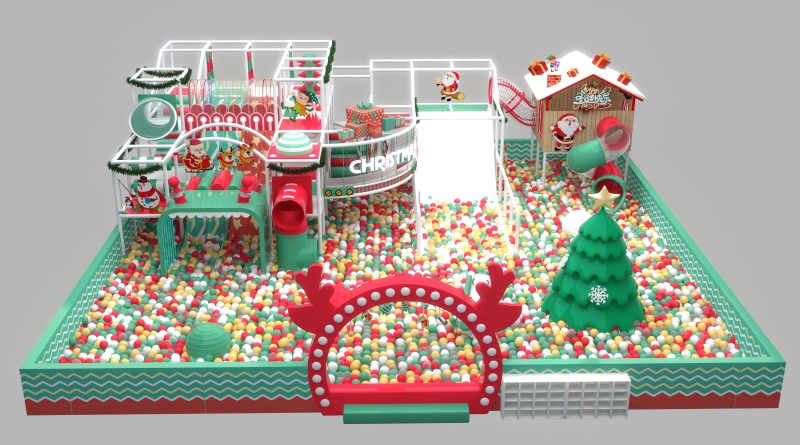Please contact us!
En
The foundation of diversity in a playground lies in the range of equipment available. Providing different types of play equipment can cater to children’s physical, cognitive, and social development. Consider including:
Physical play areas like slides, trampolines, climbing walls, and mazes for improving physical strength and coordination.
Educational equipment such as puzzles, interactive walls, and floor games to enhance creativity and cognitive skills.
Social interaction zones for role-playing and cooperative games, helping children develop teamwork and communication skills.
Sensory experience rooms for younger children or those with special needs, offering a calming and engaging environment.
Creating zones tailored to different age groups ensures that all children have access to safe and suitable activities. For example:
Toddler area (0-3 years) with soft materials and small slides for safe exploration.
Preschool area (3-6 years) featuring climbing structures, balance beams, and basic physical challenges.
Older children (6-12 years) can enjoy more challenging activities like zip lines or obstacle courses, fostering adventure and body control.
Themed play zones can spark children's imagination and keep the experience fresh and exciting. Popular themes could include:
Nature exploration zones that mimic forests, beaches, or other natural environments.
Role-playing areas such as a mini city where children can pretend to be doctors, shopkeepers, or firefighters.
Sci-Fi and technology zones with virtual reality or interactive screens that allow children to explore futuristic concepts.
Adding educational components increases the value of the playground experience. Consider:
Science interaction zones with simple experiments or gadgets that teach kids about basic physics or chemistry concepts.
Art and culture corners with painting walls or crafting stations to encourage creativity.
Language and cognitive games through interactive screens or devices that offer brain-teasing puzzles or language learning opportunities.
Keeping the playground fresh and exciting is essential. This can be achieved by:
Seasonal or thematic changes, like turning the playground into a Halloween-themed maze or a winter wonderland during holidays.
Rotating or introducing new equipment every few months to maintain novelty and attract repeat visitors.
If space allows, adding outdoor features can enhance the playground's appeal:
Outdoor mini-sports courts for activities like soccer or basketball provide a mix of indoor and outdoor fun.
Climbing walls or zip lines can offer higher physical challenges for older children.
Encourage parent-child interaction by including areas where families can play together:
Family game areas with large puzzles, cooperative games, or interactive tables for shared experiences.
Relaxation zones for parents to unwind while still being able to monitor their children’s activities.
In addition to static equipment, providing various programs can further enrich the playground experience:
Art and craft workshops for children to develop creative skills through painting, pottery, or crafting.
Physical fitness programs such as kids’ yoga, dance, or fitness classes that promote health and well-being.
Parent-child workshops that allow families to bond over cooking, crafting, or other cooperative activities.
Creating an inclusive environment is essential for diversity. Include:
Accessible play equipment and ramps for children using wheelchairs.
Sensory rooms designed for children with autism or sensory sensitivities, offering a calm and secure environment.

By diversifying the play equipment, offering age-appropriate zones, creating themed areas, and incorporating educational and special needs facilities, an indoor playground can appeal to a broader audience. Regularly updating equipment and offering family-friendly programs will further ensure a rich and engaging experience for all visitors. This not only improves customer satisfaction but also increases the playground's competitiveness and profitability.
Copyright Wenzhou Dream Garden Amusement Equipment Co.,Ltd | Sitemaps|Xml
|Please contact us!

